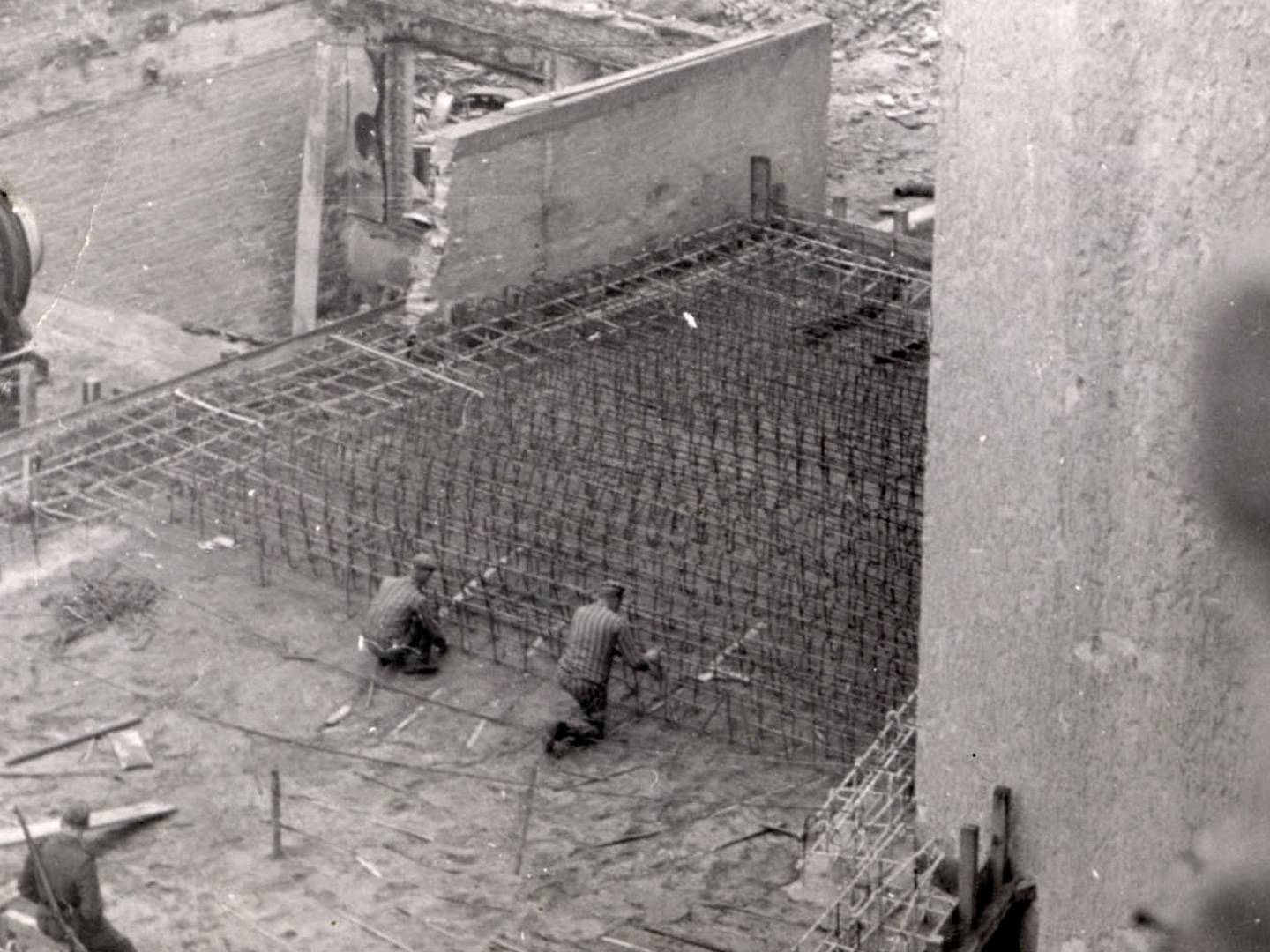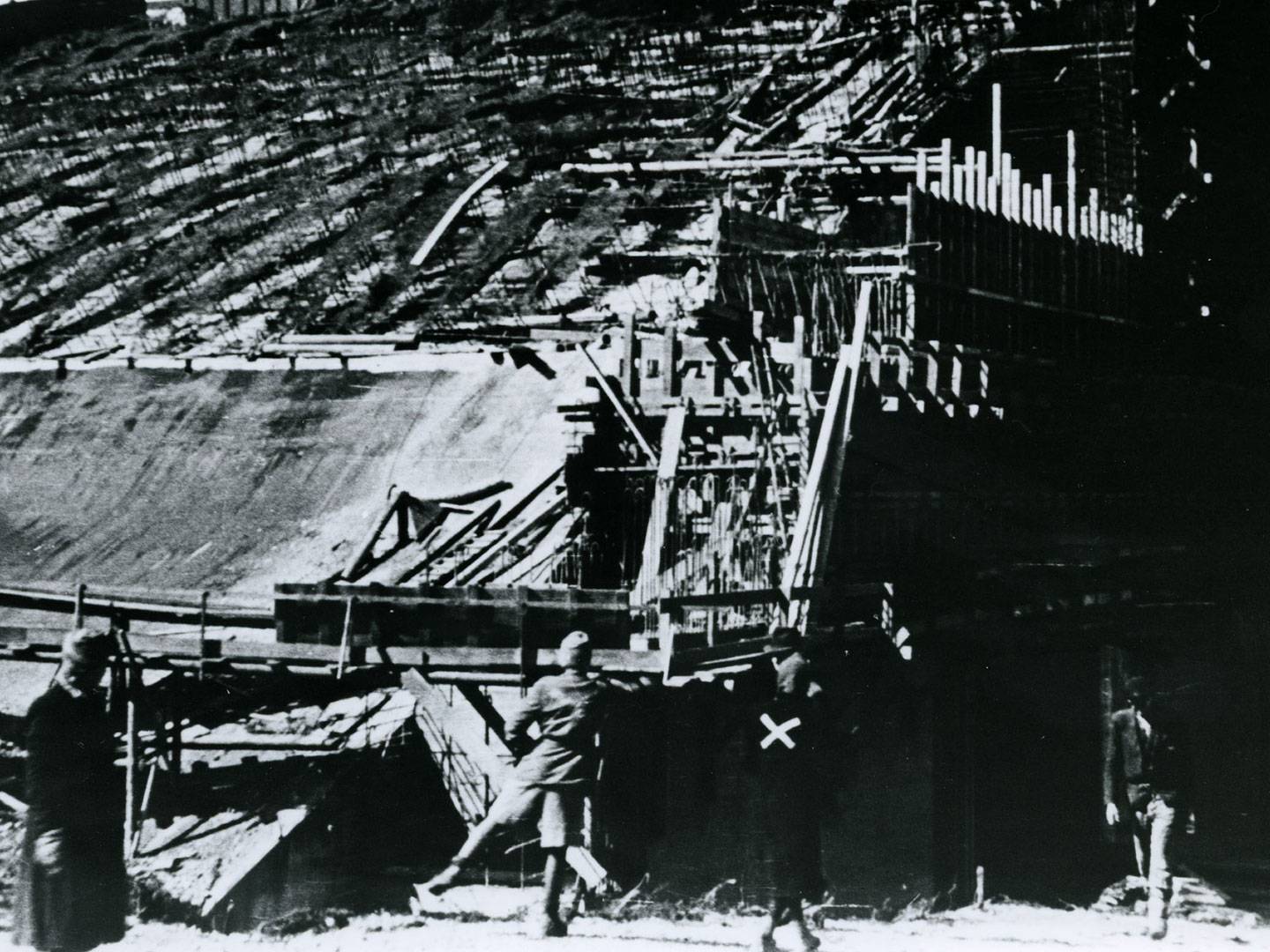Forced labour in the Landsberg/Kaufering concentration subcamp complex
Most concentration camp prisoners of the concentration subcamp complex were engaged in construction work. At first with building the prisoners’ accommodation, then with constructing roads and tracks, with sewer work, producing pre-cast concrete elements and building bunkers. Some detainees were also assigned with agricultural work, for example as harvesters or when tilling the earth.
The concentration camp prisoners had to perform backbreaking work in almost all areas – they did not always distinguish between men and women here. Prisoners in the construction commandos were forced to work until they were completely exhausted or debilitated. They also performed work in the camp commandos. Women prisoners were increasingly deployed in the OT kitchen, other tasks were cleaning the camp and procuring wood.
We had to carry the cement on boards down to the cellar. We, office people, starved, 50-kilo sacks of cement! If a sack fell to the ground, it ripped open. Then they got beatings (…)
– Dr. Kurt Deutsch about daily work
The daily working time was between eight and twelve hours, a day of rest was usually only on a Sunday. Hygienic conditions were not only abysmal in the camps, the construction sites also provided few opportunities for prisoners to either wash or go to the toilet. The total death rate of women in the camps was lower than that for men.



